 As the old year winds down over the next few days, I hope that dedicated Vita Brevis readers will spare a few moments to (re)read some of the most popular posts of 2017. (The second part of this omnibus post will run on New Year’s Day 2018.) The following twelve posts have some of the highest page view counts of the year, but in fact Christopher C. Child should appear four times on this list – that is, one-third of the year’s most popular Vita Brevis posts belong to him. To mix things up a little, I have included other posts, so as to spread the authorial wealth: Chris, Michelle Doherty, and Jeff Record each have two posts here, one appearing today and the other on Monday. Continue reading 2017: the year in review
As the old year winds down over the next few days, I hope that dedicated Vita Brevis readers will spare a few moments to (re)read some of the most popular posts of 2017. (The second part of this omnibus post will run on New Year’s Day 2018.) The following twelve posts have some of the highest page view counts of the year, but in fact Christopher C. Child should appear four times on this list – that is, one-third of the year’s most popular Vita Brevis posts belong to him. To mix things up a little, I have included other posts, so as to spread the authorial wealth: Chris, Michelle Doherty, and Jeff Record each have two posts here, one appearing today and the other on Monday. Continue reading 2017: the year in review
Tag Archives: Road Trips
Trouble with Speedwell
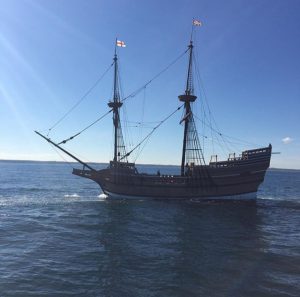
Over the next few years, you’ll hear more and more about the 400th anniversary of the Puritans and Separatists who sailed on Mayflower in 1620. We know them as “The Pilgrims.” In 1620, the Pilgrims landed at Plymouth in Massachusetts Bay, where they found harsh weather, an unfamiliar land, and where they were responsible for the care of (initially) 102 people in their new Colony.
William Bradford, the Governor of Plymouth Colony, is one of the few individuals who documented his life in the early years of the settlement. Governor Bradford was the longest-serving governor of the colony and is well known for his book, Of Plymouth Plantation, written between 1630 and 1651. Continue reading Trouble with Speedwell
A special relationship
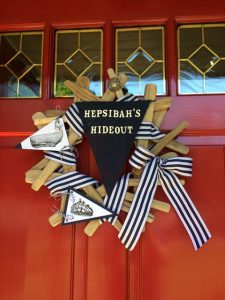 Do you have a special attachment to one ancestor? I do, and she was a source of curiosity and amusement even before I started investigating my family history in earnest.
Do you have a special attachment to one ancestor? I do, and she was a source of curiosity and amusement even before I started investigating my family history in earnest.
During a move ten years ago, I uncovered a (mostly correct) pedigree chart for my father’s side of the family. It sat for a while on my dresser, and in flipping through it with my husband one evening, the name “Hephzibah” caught our eyes. This Hephzibah[1] (also spelled Hepsibah or even Hepsibeth in her later years) was a granddaughter of two other Hephzibahs, each born in Massachusetts by 1700. Continue reading A special relationship
Fadeaway

I’ve always wanted to know more about the life of my great-grandmother Opal Young (1895–1978). To do this, I decided to see what researching her siblings might reveal about her. By and large, information about her siblings has been limited to meager ‘raw data.’ An interesting exception to this has been the life of my great-grandmother’s brother John Alfred Young (1890–1960). He is called Johnnie on the back of this Hitchcock-like cameo – it is the only known photograph to show him.[1]
Johnnie Young came to California about the time his sister Opal did in the late 1920s. Their lives as children back in Kansas seems to have been pretty normal – other than there were a LOT of people living with them in the Young household.[2] Continue reading Fadeaway
An interesting dinner party

A previous post about former President John Quincy Adams and his son visiting Nantucket listed their dining partners at a meal in the tiny village of Siasconset, on the eastern edge of the island. Most were family members of the inn’s proprietress, Betsey Cary, and all but one could conclusively be identified as island residents or relatives. The only nebulous person (and he would really love that term!) was R. T. Paine. After going down various rabbit holes trying to determine who he was, I gave up … but editor Scott Steward came up with a likely candidate: Robert Treat Paine (1803–1885).
In his own right, this gentleman was an attorney of some prominence, with a passion for astronomy and meteorology; at his death he left an “astronomical” endowment to Harvard for that purpose. His own accomplishments, however, were overshadowed by those of his father, a brilliant poet[1] … and most especially by the grandfather for whom he was named. Continue reading An interesting dinner party
Even unto death
 There is a family story that is slowly becoming legend as the generations pass. When the mood turns nostalgic and sentimental at family gatherings, someone will inevitably tell the story of the Sages and the train.
There is a family story that is slowly becoming legend as the generations pass. When the mood turns nostalgic and sentimental at family gatherings, someone will inevitably tell the story of the Sages and the train.
The story tells how my great-great-great-grandparents, James Sage and Sally Hastings, died at the same moment on 8 March 1914, when they were struck by a train in Libertyville, Illinois. They were returning home from visiting their son, who had just dropped them off at the station. As the train arrived, they attempted to cross the tracks to the far platform, but did not succeed. It is not surprising that they were unable to make it quickly across the tracks, for they were elderly, 79 and 77. It is also not surprising that they attempted it, too, as James Sage had been foolish around a train at least once before, losing a foot some years earlier, also in a train accident. Continue reading Even unto death
Bone of my bones
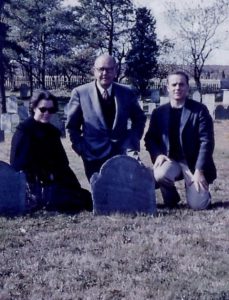
We’ve just been through Halloween, All Souls Day, and Dia de los Muertos, when society in general gives thought to skeletons, graveyards, and spirits of the departed. But whereas most folks have now packed away their plastic tombstones and ghost lights, we genealogists continue to haunt cemeteries in search of historic graves, and track down strangers whose living flesh matches that of our dead ancestors.
Long before the secrets of DNA were unlocked, humans have sensed the power in otherwise lifeless bones. Traditional Polynesian culture speaks of mana – spiritual energy – residing in bones, and relics have been treasured for centuries as a way of coming close to the holiness of Christian saints. Even elephants are known to caress the tusks and bones of their dead, somehow able to recognize the remains of elephants they’ve known in life. Continue reading Bone of my bones
A place at the table
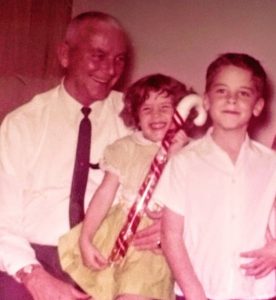
He was never spoken of at his grandfather’s table, and no place setting ever arranged for him. Even so, he moved about our 1965 holiday home as if an ‘essential presence.’ I pictured him watching the Thanksgiving turkey being carved as the sweet potatoes were passed, and I saw him sympathize as “we the kids” cringed (and cried foul!) at my mother’s edict to enjoy all of my grandmother’s green Jell-O holiday concoction.
In his mind’s eye he must have watched us move about at Christmas, unwrapping the coveted “I wants” and the gifts of a childhood he should have had, but must have only wondered about. For you see, his place at his grandfather’s table had been given away – to me. Continue reading A place at the table
Salt Lake City
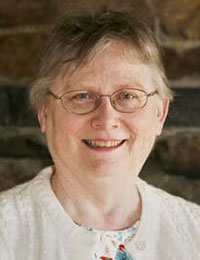 Just shy of my seventieth birthday, I finally made it to Salt Lake City. I am a notoriously bad traveler (with a tendency toward such things as sciatica, migraines, and hives), but the occasion was the annual meeting of the American Society of Genealogists, and since this was the first meeting after my election as a Fellow last October it seemed rather rude not to show up.
Just shy of my seventieth birthday, I finally made it to Salt Lake City. I am a notoriously bad traveler (with a tendency toward such things as sciatica, migraines, and hives), but the occasion was the annual meeting of the American Society of Genealogists, and since this was the first meeting after my election as a Fellow last October it seemed rather rude not to show up.
I survived the trip and got to enjoy three mild, sunny October days in Salt Lake (the fourth day was cold and windy). I enjoyed meeting new colleagues and seeing old faces, some not seen in 30 or more years. Rachal Mills Lennon is our newest Fellow. Continue reading Salt Lake City
War stories
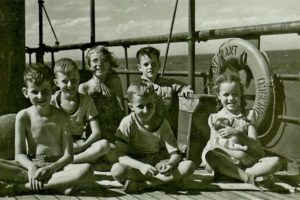
A previous Vita Brevis post featured the story of how my grandfather[1] went to sea after college and eventually became a station master for Pan Am’s flying boat operations in the South Pacific. It concluded with my family dropped off in Gladstone, Australia, after being evacuated from Noumea, New Caledonia, shortly after the bombing of Pearl Harbor. At least a couple of folks wondered what happened to them after that, so here’s the rest of the story, plus a contemporary epilogue. Continue reading War stories